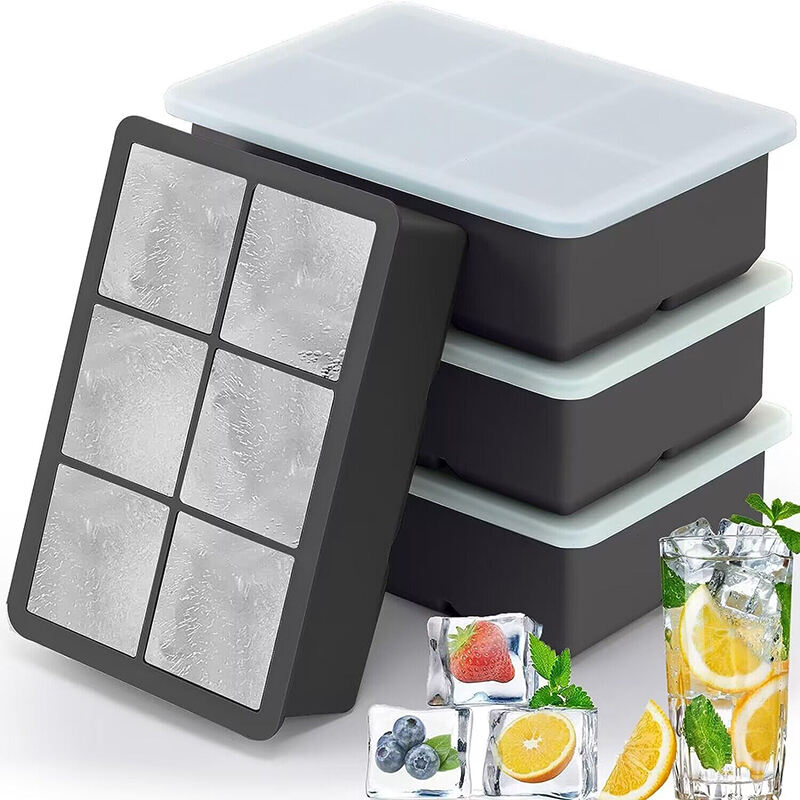Sanoatda silikonning oshib borayotgan ahamiyati
Sanoat sohalari o'zgarib borayotgani va yangi texnologiyalar joriy etilayotgani sayin, silikon hozirgi kunda zavodlar va laboratoriyalarda avvalgidan ko'proq qo'llanilmoqda. Bu moslanuvchan material plastmassalar, metallar va rezinalarning hech qachon erish olmaydigan xususiyatlarga ega bo'lib, shu sababli ham avtomobillar ishlab chiqarishdan boshlab kasalxonagacha bo'lgan sohalarda yangi innovatsiyalarni rag'batlantirmoqda. Keyingi bo'limlarda silikon qayerga borayotganini, u allaqachon qanday vazifalarni bajarayotganini va uning ahamiyatini yanada oshirayotgan katta o'zgarishlarni ko'rib chiqamiz.
Asosan, shishaning tarkibida silikon, kislorod, uglerod va vodoroddan tashkil topgan sun'iy zanjir bo'lib, bu oddiy tarkib maxsus mustahkamlik xususiyatlarini birlashtiradi. U yuqori haroratga chidamli, uzilmasdan egiladi va cho'ziladi, shuningdek, kuchli tozalagichlar yoki yoqilg'ilar ta'siriga barqaror bo'ladi. Shu sababli ham muhandislar mashinalardan jarrohlik stollarigacha bo'lgan sohalarda foydalanishadi. Barcha ishlab chiqaruvchilar tez ishlaydigan va saqlash arafonasi arzon bo'lgan mashinalar yaratmoqchi bo'lganligi sababli ushbu polimerga bo'lgan talab doim oshib ketmoqda.
Avtomobillar sohasini tashkil qilishda ildam o'zgarishlar
Shishaning avtomobillar olamidagi qoidalar kitobini qayta yozish jarayoni davom etmoqda va uning ta'siri montaj zavodining har bir qismida his etilmoqda. Elektr avtomobillarning yengilroq konstruksiyasi, uzoqroq masofaga yetib borish imkoniyati va ekologik jihatdan toza batareyalar yaratish maqsadida ko'plab ishlab chiqaruvchilar eski gershel va podshipniklarni siloksan birikmalari bilan almashtirmoqda, chunki bu qismlar vaznini kamaytiradi, lekin hamda kengroq foydalanish muddatiga ega bo'ladi. Shishaning germetik gershelari elektr transport vositalarining batareya bloklarini himoya qiladi, shishaning yupqa qatlamlari esa elektr zanjirini tuz, namlik va yo'l suvi ta'siridan himoya qiladi.
Avtomobil ishlab chiqaruvchilar barcha vaqt aqlli, yashilroq modellar yaratib tashlayotgan sari, shinalop qismlar va ularni yetkazib beruvchi yetkazib beruvchilarga bo'lgan ehtiyoj tobora ortib boradi.
Tibbiyot texnologiyasini inqilob qilish
Kasalxonalar va laboratoriyalarda shinalop qurilmalarning qanday qurilishini va foydalanish usulini o'zgartirmoqda. Chunki shinalop material bakteriyalarga qarshi kurashadi, juda yuqori haroratga chidamli va sindirishga qarshi, shu sababli muhandislar implantatlarga, kateterlarga va hatto protez a'zolarga ham qo'llaydilar. Shunaqa qilib, shifokorlarning endi bemorlarga individual e'tibor qaratishiga mos ravishda buyurtma qilinadigan maxsus shinalop komponentlarga bo'lgan talab tez sur'atda o'smoqda. Shuningdek, tibbiy vizualizatsiya, monitoring va robot texnologiyalari yaxshilanayotgani sari shinalopdan foydalangan holda yaratilgan qurilmalar soni aniq ko'payadi.
Qurilish sohasida o'z o'rnini egallamoqda
Qurilish maydonlarida silikon juda qiyin arafaga tushmoqda. Ushbu birikma bilan tayyorlangan germetik va yelimlovchi materiallar yomg'ir, qor va kuchli UV nurlarga chidamli bo'lib, oynalar, tom va kanalizatsiyani o'tkazmaydi va o'ttiz yil davomida ishlatiladi. Shuningdek, energiya tejashga qaratilgan qurilishchilari ham silikonni izolyatsiya va shishmaga yaxshi yopishib turadi, sovutish va isitish xarajatlarini kamaytiradi. Bir vaqtda, elektr tarmog'iga gaplashish uchun mo'ljallangan sensorlar, mikrofonlar va simlar silikon bilan qoplangan bo'lishi hamda aqlli uylar va ofislarga eshik ochadi.
Kelajakni shakllantiruvchi yangi tendentsiyalar
Oldinga qarab, bir nechta tendentsiyalar bozorni qayta shakllashga va'da beradi. Avvalo, ekologik toza kimyoga intilish laboratoriyalarni hali ham mustahkam va moslashuvchanlik xususiyatlarini saqlab turuvchi kam ta'sirli silikonlarga o'tishga undamoqda.
Hozirgi vaqtda 3D bosmaxona kabi yangi ishlab chiqarish vositalari muhandislarga avvalo imkonsiz deb hisoblangan murakkab silikon qismlarni yaratish imkonini berdi. Shu tufayli, yakuniy silikon mahsulotlari yaxshiroq ishlashi hamda turli xom ashyolardan (kuchuklar uchun o'yinchoqlardan boshlab, yuqori texnologik o'yinchoqlargacha) ko'proq uchrab tursa kerak.
Sanoat silikoni uchun yorug' kelajak
Umuman olganda, zavodlar va ishlab chiqarish joylarida ishlatiladigan silikon sohasida istiqbolli kelajak bor. Barcha o'lchamdagi kompaniyalar aqlli loyihalarga va tezroq ishlab chiqarishga intilayotganda, silikon shu maqsadlarni amalga oshirishda yordam berib keladi. Transport vositalarida, tibbiy asboblarda yoki binolarda uchraydigan bo'lsin, materialning moslashuvchan, lekin chidamli xususiyati uning ishlab chiqarish liniyalari uchun doimiy o'rin egallashiga kafolat beradi. Zamonaviy silikon yechimlarini qo'llab-quvvatayotgan firmalar kelgusi mijozlarga xizmat ko'rsatishga tayyor bo'ladi va raqiblaridan bir qadam oldinda turishadi.

